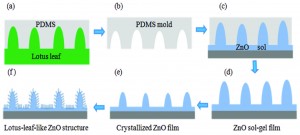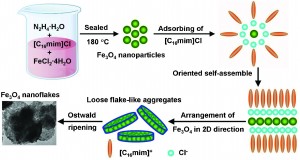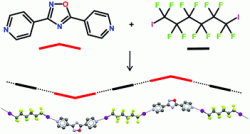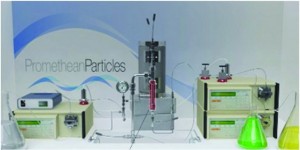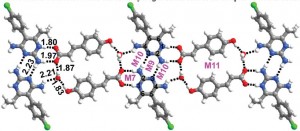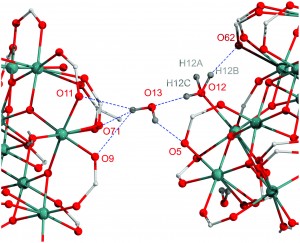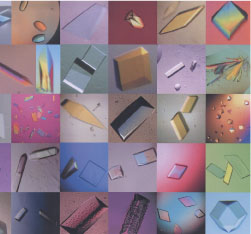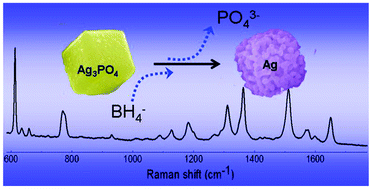This month sees the following articles in CrystEngComm that are in the top ten most accessed:-
Covalent organic frameworks
Andrew I. Cooper
CrystEngComm, 2013,15, 1483-1483 DOI: 10.1039/C2CE90122F
Mn(ii) metal–organic frameworks based on Mn3 clusters: from 2D layer to 3D framework by the “pillaring” approach
Yong-Qiang Chen , Sui-Jun Liu , Yun-Wu Li , Guo-Rong Li , Kun-Huan He , Ze Chang and Xian-He Bu
CrystEngComm, 2013,15, 1613-1617 DOI: 10.1039/C2CE26734A
Fabrication of ZnO/CdS/Cu2ZnSnS4 p–n heterostructure nanorod arrays via a solution-based route
Xu Liu , Chunrui Wang , Jing Xu , Xiaoyun Liu , Rujia Zou , Lizhi Ouyang , Xiaofeng Xu , Xiaoshuang Chen and Huaizhong Xing
CrystEngComm, 2013,15, 1139-1145 DOI: 10.1039/C2CE26829A
A rhombus channel metal–organic framework comprised of Sr2+ and thiophene-2, 5-dicarboxylic acid exhibiting novel dielectric bistability
Qian Chen , Ping-Chun Guo , Shun-Ping Zhao , Jian-Lan Liu and Xiao-Ming Ren
CrystEngComm, 2013,15, 1264-1270 DOI: 10.1039/C2CE26450A
Molecular architecture using novel types of non-covalent p-interactions involving aromatic neutrals, aromatic cations and p-anions
Saikat Kumar Seth , Prankrishna Manna , N. Jiten Singh , Monojit Mitra , Atish Dipankar Jana , Amrita Das , Somnath Ray Choudhury , Tanusree Kar , Subrata Mukhopadhyay and Kwang S. Kim
CrystEngComm, 2013,15, 1285-1288 DOI: 10.1039/C2CE26577J
Template-free synthesis and high photocatalytic activity of hierarchical Zn2GeO4 microspheres
Jin Liu and Gaoke Zhang
CrystEngComm, 2013,15, 382-389 DOI: 10.1039/C2CE26316E
Effect of pH/metal ion on the structure of metal–organic frameworks based on novel bifunctionalized ligand 4′-carboxy-4,2′:6′,4”-terpyridine
Fei Yuan , Juan Xie , Huai-Ming Hu , Chun-Mei Yuan , Bing Xu , Meng-Lin Yang , Fa-Xin Dong and Gang-Lin Xue
CrystEngComm, 2013,15, 1460-1467 DOI: 10.1039/C2CE26171E
Three cobalt(ii) coordination polymers based on V-shaped aromatic polycarboxylates and rigid bis(imidazole) ligand: syntheses, crystal structures, physical properties and theoretical studies
Hong Zhou , Guang-Xiang Liu , Xiao-Feng Wang and Yan Wang
CrystEngComm, 2013,15, 1377-1388 DOI: 10.1039/C2CE26606G
In-situ coordination chemistry within cobalt-containing phthalocyanine nanoporous crystals
C. Grazia Bezzu , Benson M. Kariuki , Madeleine Helliwell , Floriana Tuna , John E. Warren , David R. Allan and Neil B. McKeown
CrystEngComm, 2013,15, 1545-1550 DOI: 10.1039/C2CE26463C
The catanionic surfactant-assisted syntheses of 26-faceted and hexapod-shaped Cu2O and their electrochemical performances
Wenpei Kang , Fenglin Liu , Yunlan Su , Dujin Wang and Qiang Shen
CrystEngComm, 2011,13, 4174-4180 DOI: 10.1039/C1CE05319A
Why not take a look at the articles today and blog your thoughts and comments below.
Fancy submitting an article to CrystEngComm? Then why not submit to us today or alternatively email us your suggestions.
